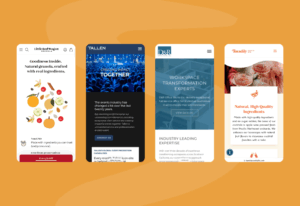
Virtual Reality is Here to Stay. Here’s How You Can Use It.
Imagine slipping on a headset and arriving at your afternoon business meeting. Or test-driving a car without ever leaving your couch. For years, many industries have viewed virtual reality as expensive, inconvenient, or irrelevant. After all, who has space for a clunky, desktop-tethered system? But standalone virtual reality (VR) devices are becoming more powerful and more affordable. Thanks to these advances, industries are discovering VR’s potential.
Using VR, surgeons train for complex procedures without risking patient lives. Teachers practice managing classrooms full of boisterous children. Military and law enforcement personnel can run through emergency protocols and exercises. And if something goes wrong? They simply hit the reset button and try again.
Understanding the difference between virtual reality and augmented reality
Both have practical business applications. But it’s important to understand the difference between VR and AR. Typically, AR adds digital elements to a live view. It does this using a digital medium such as the camera on your smartphone. AR includes everyday things—like Snapchat filters—and more complex applications.
Augmented reality brings the fantastic into the real world
The recently released AR game, Wizard’s Unite, lets players step into J.K. Rowling’s wizarding world. In the game, players complete quests while connecting with friends. Its precursor, Pokemon GO, was one of the first of its kind and scale. The game launched in 2016 and quickly became a global phenomenon. According to Business of Apps, at its early peak, US Pokémon Go daily user numbers stood at 28.5 million.
Plenty of entertainment and social media platforms already use AR. But it also has practical, if unexpected, applications. Both IKEA and Wayfair use AR to let shoppers see how a new piece of furniture looks in their home before they buy. Sephora uses a 3D augmented reality mirror that simulates different makeup palettes in real-time. And the Living Wine Labels app uses AR to turn the wine aisle into a history lesson on 19th century vagabonds.
Virtual reality transports users into real-world or imagined environments
While AR relies on a user’s surroundings, VR is an immersive experience that shuts out the user’s physical surroundings altogether. VR devices transport users into real-world or imagined environments. Everything the user experiences is computer-generated. They feel as if they’re seeing, hearing, and sometimes even touching the digital world. And the potential for VR continues to grow. All-in-one headsets are replacing tethered setups. Users no longer have to connect with a desktop computer, which means more consumers (and companies) are investing in VR equipment. In fact, Superdata forecasts 1.3 million sales of Oculus’ next-generation standalone headset in 2019.
VR will impact every field of business
VR technology still hasn’t gone mainstream. But it’s still poised to disrupt businesses across industries. Tractica forecasts that business use will outpace leisure use in the coming years. They predict spending will reach 9.2 billion by 2021. There are boundless client- and business-facing possibilities. So how can you leverage this cutting-edge technology?
Training and recruiting purposes
Imagine conducting face-to-face interviews with candidates around the world for free. Or offering recruits a working interview without them setting foot in the office. Today’s creative businesses are incorporating VR into many recruitment and training protocols.
Engaging recruitment tactics
Using VR shows potential employees that your company is committed to innovation. And it can be a fun, engaging way to vet candidates and hire the most skilled recruits. Take, for example, a recent collaboration between Jaguar and popular band, Gorillaz. They wanted a better way to fill electronic and software engineering positions. They invited candidates to learn about electric vehicles and complete code-breaking puzzle games. The creative recruitment campaign drew global attention. Plus, it allowed the company to fast-track the most skilled applicants.
More informed candidates
Employee turnover is an expensive and often unavoidable part of running a business. Often, candidates don’t know if they’ll match the culture and demands of a job before their start date. Because VR is an immersive experience, it can help candidates understand the position before they sign their contracts. Jet.com, for example, invites candidates to “spend the day with them” using VR. Potential recruits sit in on a meeting with the CEO, experience Jet’s happy hour, and even get to play games.
VR can also give potential employees insight into the actual demands of the position. Using VR, Deutsche Bahn lets recruits walk in their workers’ shoes. They can experience different jobs before they apply. “The idea is to give people a good insight of the jobs at Deutsche Bahn. We want applicants to get a close look over the shoulder of an electrician or a train driver. That is something that makes the application process very tangible and very satisfying. We can show how fascinating jobs are in the real world.” says Deutsche Bahn’s head of talent acquisition.
“Hands-on” training
Americans statistically spend upwards of $90 billion each Black Friday. Considering this, it’s hard to imagine retailers ever feeling prepared for the influx. But Walmart has taken employee training to a whole new level through VR. In 2018, Vox writer Patrick Sisson got to experience the chaos of a Black Friday rush. He did so using Walmart’s patented VR simulation. “It’s a bit claustrophobic, with customers streaming past me in every direction,” he writes. “Spinning my head, I see a family pushing a cart filled with emoji slippers, then a man rushing past with a haul of electronics, and finally, a team of associates giving directions to lost shoppers.”
The simulation trains employees to handle the rush of Black Friday shoppers. VR provides a distinct advantage because of how our brains process simulations. The immersion allows for experiential learning. VR creates experiential learning environments. With experiential learning, our neurons react as if the situation is really happening.
This provides a unique advantage to high-stress or high-stakes industries. Through VR , employees can train for unexpected challenges, so they’re better able to handle them when they arise in the real world.
Creating unique customer experiences
Currently, VR is a novel enough technology that it creates its own draw. But, as VR becomes more widespread, that will change. Forward-thinking companies will harness it to improve the customer experience.
“Try before you buy” capabilities
Using VR and AR, customers get a sneak peek into their potential future reality. They can “try on” clothing. “Furnish” their homes with your new furniture collection. They can even visit the virtual showroom to “test drive” an Audi. These experiences help potential buyers see the value before investing in products.
Virtual reality is not only reshaping the retail experience. It’s also having a profound impact on real estate, travel, and hospitality. Consider Expedia’s virtual reality project. Potential travelers can see and swim in Mexico’s cenote pools using an Oculus Rift headset. The company hopes that seeing destinations firsthand will inspire travelers to book tickets.
Social spaces and sites of community building
The internet has drastically changed our social landscape. We use social media, gaming networks, and web forums, to connect with people around the world. And virtual reality might be the future of those online communities. One of the most popular VR community platforms to-date is Oculus Rooms. This “personalized home base” lets friends gather to play games, chat, and watch videos. The VR successor to the wildly popular social game Second Life just entered beta testing. Soon users might have an entire virtual life, complete with immersive experiences. Plus, established social media players are investing in VR. Facebook is even working on full-body virtual avatars.
Development, prototyping, and modeling
Finally, VR provides a cost-effective alternative to expensive and time-consuming development strategies. Designers and developers interact with their prototypes digitally, in real-time. With this technology, they’re able to address flaws faster. The Bresslergroup says VR may even replace traditional foam core mock-ups.
These life-size constructions have been a staple in product development for years. “But the larger models,” writes Bresslergroup correspondent Thomas Murray, “can take skilled designers days and even weeks to construct. And if a large change needs to be made to the model, it again takes time and significant effort to modify.” Using VR modeling software, changes are almost instant. Plus, using AI and machine learning teams can test a vast number of variables in a fraction of the time.
The future is virtually here
VR technology is becoming more affordable and available. Forward-thinking companies are already exploring its practical applications. As the technology continues to evolve, it’s clear that virtual reality will disrupt industries in unimaginable ways.
Recent Posts
Connected Strategies for Consistent, Scalable Growth
Think about the last time you opened a new tab to complete a task and ended up juggling five tools, three logins, and a dozen message notifications. It’s the modern […]
Read MoreWhy Clients Call Us the Best Digital Marketing Agency in Bend, Oregon: Showcasing Our Impactful Work
We love helping brands surpass their competition—and their expectations. Clients often refer to us as the best digital marketing agency in Bend, Oregon, and it’s not a title we take […]
Read MoreFuture-Proof Your Brand With a Tailored Digital Ecosystem Strategy
The pace of digital change isn’t slowing down anytime soon. Businesses that rely on outdated tools, disconnected platforms, or piecemeal marketing efforts often find themselves stuck, unable to scale or […]
Read MoreTop 4 Reasons Why You Need a Google Partner SEO Agency
Not all SEO support is created equal. Many companies turn to task-based vendors who can handle the basics, keyword research, blog posts, or technical fixes, but fall short when it […]
Read More



